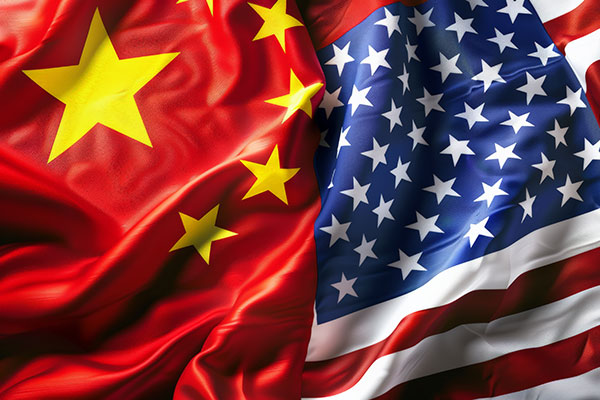Introduction
The relationship between the United States and China has long been one of the most consequential in global politics, shaping trade, security, and diplomacy across continents. In recent months, however, tensions have escalated dramatically. Disputes over technology, military influence, and human rights are testing the fragile balance between the world’s two largest economies. The outcome of this rivalry will not only determine the future of both nations but also redefine international relations for decades to come.
For policymakers, business leaders, and ordinary citizens, understanding this evolving dynamic is essential. As Washington and Beijing clash on multiple fronts, the implications stretch far beyond bilateral disagreements, reaching into global trade, security alliances, and the future of technological innovation.
The Trade Battle Continues
Trade has been at the heart of US-China disputes for years, and despite multiple rounds of negotiations, friction remains high. Tariffs imposed during earlier trade wars still affect key industries, while new disputes over agricultural exports, semiconductor supplies, and rare earth minerals have surfaced.
China, which holds significant influence over global supply chains, is increasingly seen as both a competitor and a critical partner. Meanwhile, the United States continues to press for fairer trade practices, intellectual property protections, and reduced trade imbalances. The inability to resolve these disputes is not just hurting the two nations but also creating instability in global markets.
The Race for Technological Dominance
Another flashpoint in the rivalry is technology. The United States has taken steps to restrict Chinese tech companies, particularly in areas like telecommunications, artificial intelligence, and semiconductors. Huawei, TikTok, and other firms have faced scrutiny and restrictions, with Washington citing national security concerns.
China, in turn, is accelerating efforts to achieve self-reliance in critical technologies. Its government-backed investments in AI, quantum computing, and 5G infrastructure demonstrate a clear determination to lead in innovation. The outcome of this technological race will have profound consequences for global digital ecosystems and standards.
Military Presence and Security Concerns
The South China Sea remains one of the most volatile regions in the world. The United States continues to conduct freedom-of-navigation operations, challenging China’s territorial claims, while Beijing expands its military presence through artificial islands and advanced naval capabilities.
Tensions are also rising over Taiwan, a self-governing island that China claims as its own. The United States has reaffirmed its support for Taiwan, providing military aid and maintaining unofficial diplomatic ties. Any escalation in this region risks drawing in other global powers and destabilizing security in the Asia-Pacific.
Human Rights and Diplomatic Pressure
Human rights have become another dividing line between the two countries. The United States has condemned China’s treatment of Uyghur Muslims in Xinjiang and the erosion of freedoms in Hong Kong. Beijing, in response, accuses Washington of interference in its domestic affairs.
Diplomatic efforts to bridge these gaps remain fragile. High-level meetings often end with little progress, highlighting the deep mistrust between the two governments. Both sides continue to use sanctions, visa restrictions, and international platforms to advance their agendas.
The Global Ripple Effect
The rivalry is not confined to Washington and Beijing. Other nations are increasingly caught in the middle, forced to choose sides or find ways to balance relationships with both powers. Europe, for example, faces the challenge of maintaining economic ties with China while aligning politically with the United States.
Developing countries, particularly in Africa and Southeast Asia, also feel the impact. China’s Belt and Road Initiative is expanding infrastructure influence, while the United States pushes for alternative partnerships to counter Beijing’s growing reach. This competition is reshaping alliances and challenging the stability of international institutions.
Economic Consequences for Ordinary Citizens
The ongoing tensions are also felt at the individual level. Rising tariffs, supply chain disruptions, and inflation linked to global uncertainty affect businesses and consumers worldwide. Industries dependent on semiconductor chips, such as automotive and electronics, have already experienced significant challenges due to geopolitical rivalries.
For ordinary people, the rivalry translates into higher prices for goods, limited access to technology, and uncertainty about future job markets. The economic consequences are not limited to the US and China but spread across the globe, affecting millions of lives.
FAQs
Why are the US and China in conflict?
The rivalry stems from disputes over trade, technology, military influence, and human rights, each contributing to rising tensions between the two nations.
What role does technology play in this rivalry?
Technology is a key battleground, with both nations striving for dominance in AI, 5G, and semiconductors. The winner of this race will shape global digital standards and influence.
Is the conflict likely to escalate militarily?
While direct conflict is unlikely, tensions in regions like the South China Sea and Taiwan raise concerns about potential flashpoints that could spark military escalation.
How does this rivalry affect global markets?
Tariffs, supply chain disruptions, and sanctions create volatility, impacting industries such as electronics, agriculture, and energy worldwide.
What does this mean for ordinary people?
Consumers may face rising costs, businesses may experience supply shortages, and workers could see job markets shift due to global economic uncertainty.
Conclusion
The rivalry between the United States and China is one of the defining challenges of the 21st century. It is a complex competition that spans economics, technology, military power, and human rights, with consequences that touch nearly every corner of the world.
As both nations double down on their positions, global politics is entering a new era defined by uncertainty and competition. The world is watching closely, aware that the decisions made in Washington and Beijing will shape the future of international relations. The question remains whether this rivalry will lead to greater innovation and cooperation or to division and conflict that destabilizes global peace.

Leave a Reply